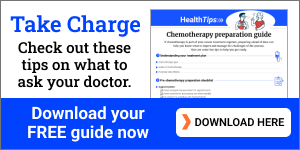As a caregiver, I’m always on the lookout for myeloma research news
Staying informed and up to date is a crucial aspect of caregiving
Written by |

The word “caregiver” usually conjures up images of hands-on support: providing comfort, helping out with everyday tasks, and managing medications. However, for those of us navigating the complex world of illnesses like myeloma, a major aspect of the role unfolds quietly, usually in the dead of night, when we are seated in front of a glowing screen. It is the silent vigil, the unrelenting search for information that could possibly be the breakthrough we are desperately waiting for.
When my mum was diagnosed with myeloma, the first piece of advice I received felt like a cruel paradox: Conduct “active surveillance.” It meant watching and waiting for the moment this inactive cancer might awaken and wreak havoc.
As a caregiver, this passive approach felt unbearable. Every scan, every blood test brought breath-holding anxiety. My hands might have been tied when it came to direct intervention, but my mind definitely was not.
At first, I hesitated, still unsure of my role. But then, with determination and fierce intention, I transformed into an information scout.
My evenings turned into research sessions as I read patient forums, clinical trial updates, and medical journals. I learned how to discern fleeting hopes from reputable sources, filtering jargon to understand the essence of each discovery.
This is not mere curiosity; it’s a profound imperative driven by love and dedication to discover anything that could provide a pathway to remission, a delayed progression, or even a glimpse of a better future. It’s the quiet warfare fought by thousands of caregivers worldwide, fueled by an unwavering belief that somewhere, somebody is searching for a new answer.
A few weeks ago, my vigilance paid off. I came across a headline: “FDA committee votes in favor of Darzalex Faspro for HR-SMM.” A jolt went through my body. For a condition where “watch and wait” is the norm, the potential approval of a targeted therapy like Darzalex Faspro (daratumumab and hyaluronidase-fihj) is huge. It represents not just a drug, but a tangible shift from passive observation to proactive intervention.
This is the type of news that validates all those late-night searches, all those anxious moments spent combing through data.
This isn’t just about me and my mum; it’s about every caregiver out there. Our relentless efforts to stay informed and up to date are not in vain. These medical advancements, the results of dedicated research, become lifelines when we know where to look for them.
So continue looking. Continue reading. Your dedication to remaining on the lookout could just lead you to the next piece of hope, a potential “survival guide” for the one you love and care for.
Note: Rare Cancer News is strictly a news and information website about the disease. It does not provide medical advice, diagnosis, or treatment. This content is not intended to be a substitute for professional medical advice, diagnosis, or treatment. Always seek the advice of your physician or other qualified health provider with any questions you may have regarding a medical condition. Never disregard professional medical advice or delay in seeking it because of something you have read on this website. The opinions expressed in this column are not those of Rare Cancer News or its parent company, Bionews, and are intended to spark discussion about issues pertaining to rare cancer.






Leave a comment
Fill in the required fields to post. Your email address will not be published.